Early one morning in January 2016 I was trying to track down and photograph an elusive roadrunner on my in-law’s property on Red Hill, in Silver City, New Mexico. After 10 minutes of failing in this endeavor, I started to hear a faint tapping noise off in the distance. I got really excited, as the closer I got, the more evident it became that the sound was a bird hammering on wood. I was thinking ‘how fantastic I am about to photograph a wood-pecker’. When I laid eyes on the bird it didn’t look anything like a woodpecker. After a month of google searching, I found out that the little grey bird pounding that tree was a Juniper Titmouse, Baeolophus ridgwayi.
Photographing this little bird was difficult for a number of reasons. I will start with the fact that it was freezing cold, and I was knee-deep in the snow trying to avoid buried cactus and who knows what else. Then random gusts of strong wind kept nearly blowing me over, and my face and hands began to freeze.
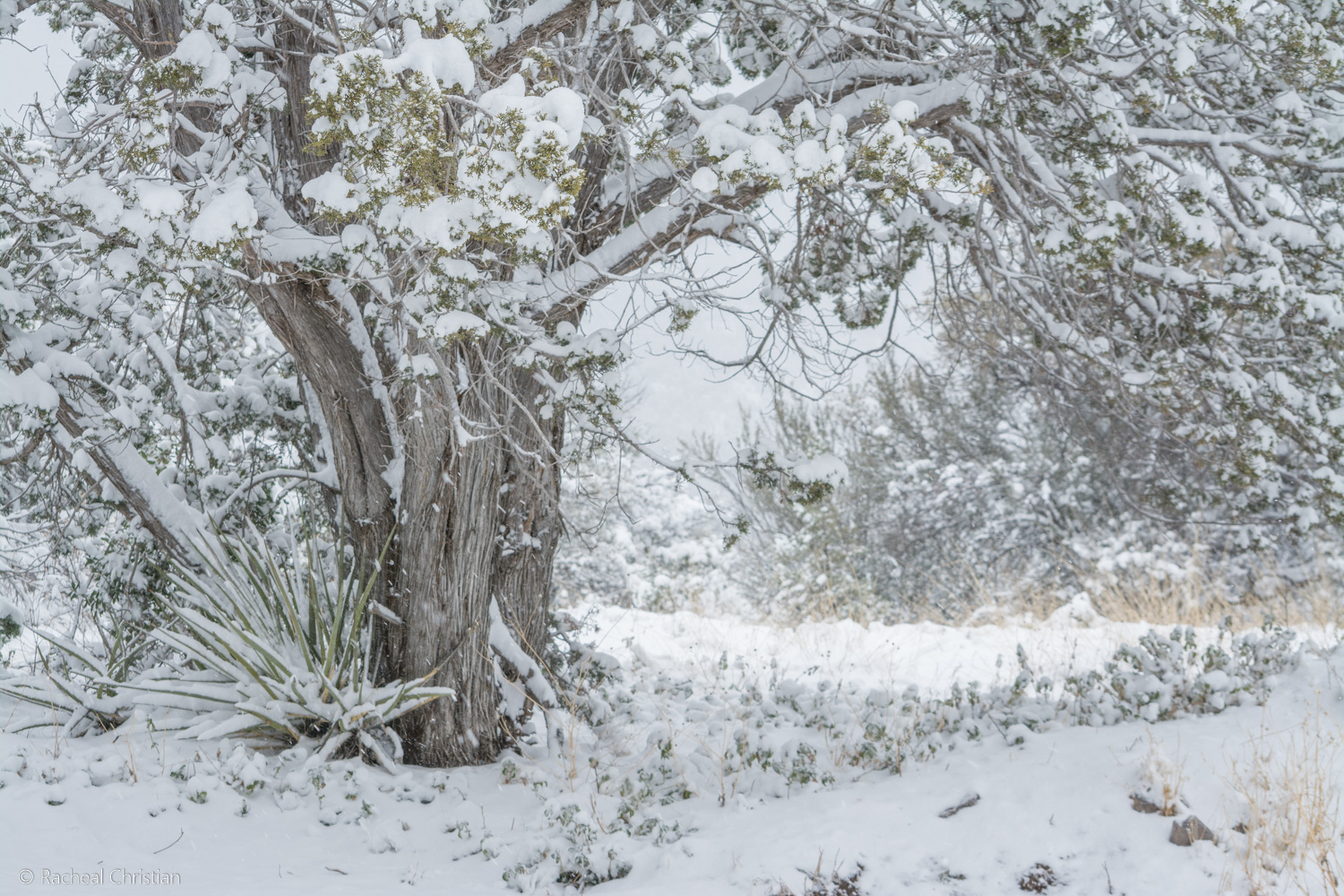
The tree the Juniper Titmouth was in
I had to get in close, as the snow was blowing everywhere, and the tree branches were blocking my subject. I tried really hard to be quiet and be all stealthy, but trying to be quiet when walking through snow is not easy. I scared them all off, although though sheer determination and fear of failure (and not wanting to have to come out and give this a second go later) I stayed hidden under that tree and waited for them to come back.
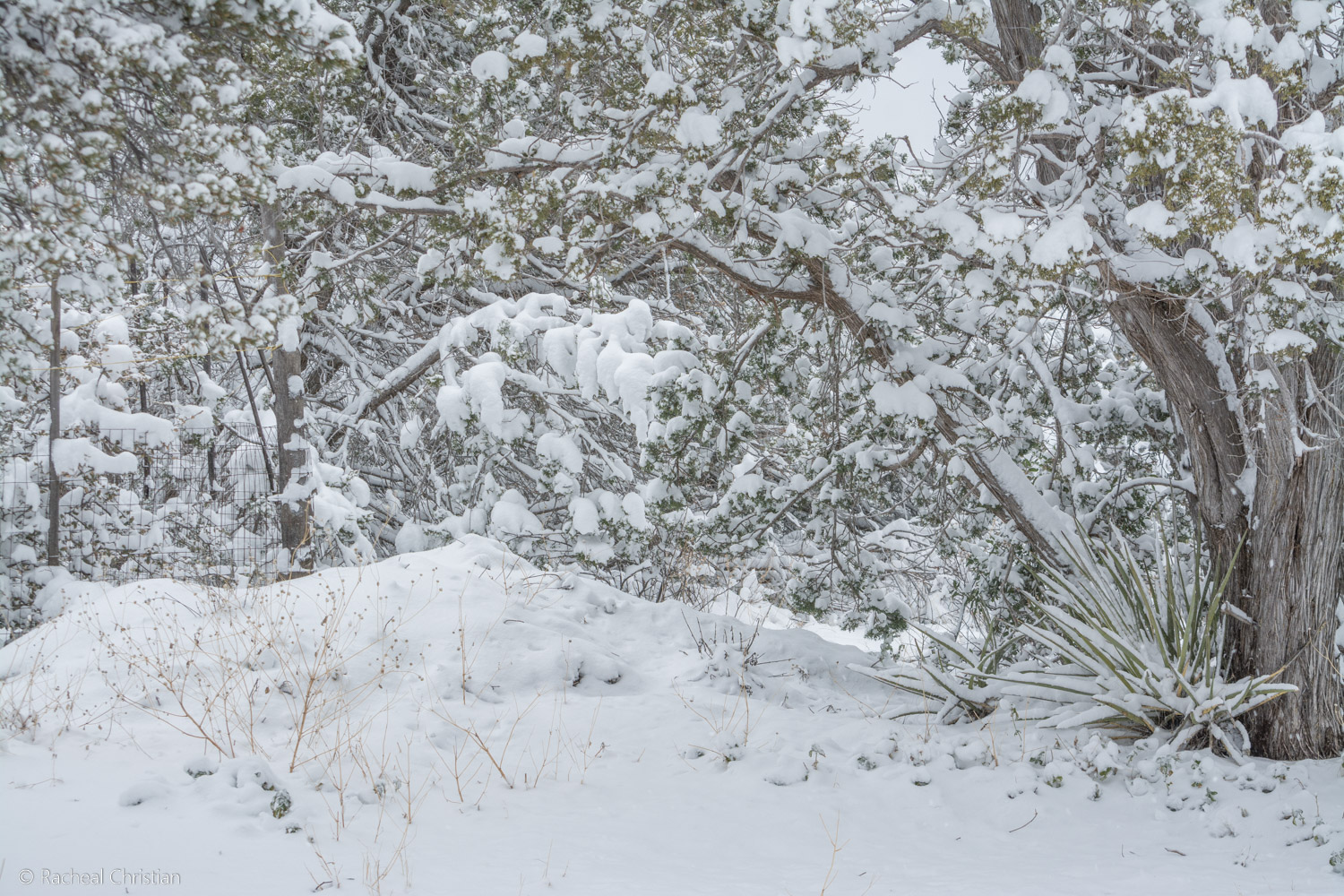
The pile of snow I had to walk through
I was elated as they came back and continued pounding the branches. From the images, I captured it looked as though they were burrowing into the tree and pulling a creature out, but it also looks like a berry, so I am not sure. According to my research on the Juniper Titmouse, it feeds on spiders and other insects. It forages for berries, nuts, and seeds and often hammers them onto branches. This bird also forages on foliage, twigs, branches, trunks, and occasionally on the ground.
I had my ISO set to 200, as I was trying to keep the noise in the image to minimum. This meant I had to keep my shutter speed set to 1/200 sec and I didn’t have my tripod, which made it hard to take a sharp photograph. I had to stay as still as I could, it was not easy. I was using my Nikon AF-S DX NIKKOR 55-300mm f/4.5-5.6G ED Vibration Reduction Zoom Lens with Auto Focus for Nikon DSLR Cameras on my Nikon D7100 24.1 MP DX-Format CMOS Digital SLR
and kept the focal range between 180mm and 300mm when zooming in and out.
With the temperature dropping below 28°F (-2.2°C) I had very little time left as I started to feel a sharp pain in my hands and knew I had to go inside soon. I was determined to at least get one half-decent shot of this plain-looking, yet entertaining bird, and I think I managed to do it…….considering.
.
Cool Facts About The Juniper Titmouse
Until recently the juniper titmouse and the oak titmouse were thought to be one species called the plain titmouse. The American Ornithologists’ Union decided to split the two in 1996 when it was found that they had notable differences including their genetic makeup.
One thing I found out that made me smile is while it is definitely not a woodpecker, the juniper titmouse does like to use abandon woodpecker hollows for nesting. So I did not find a roadrunner or a wood-pecker on that cold morning, although I did find discover a new little grey bird called the juniper titmouse.
Juniper Titmouse Gallery
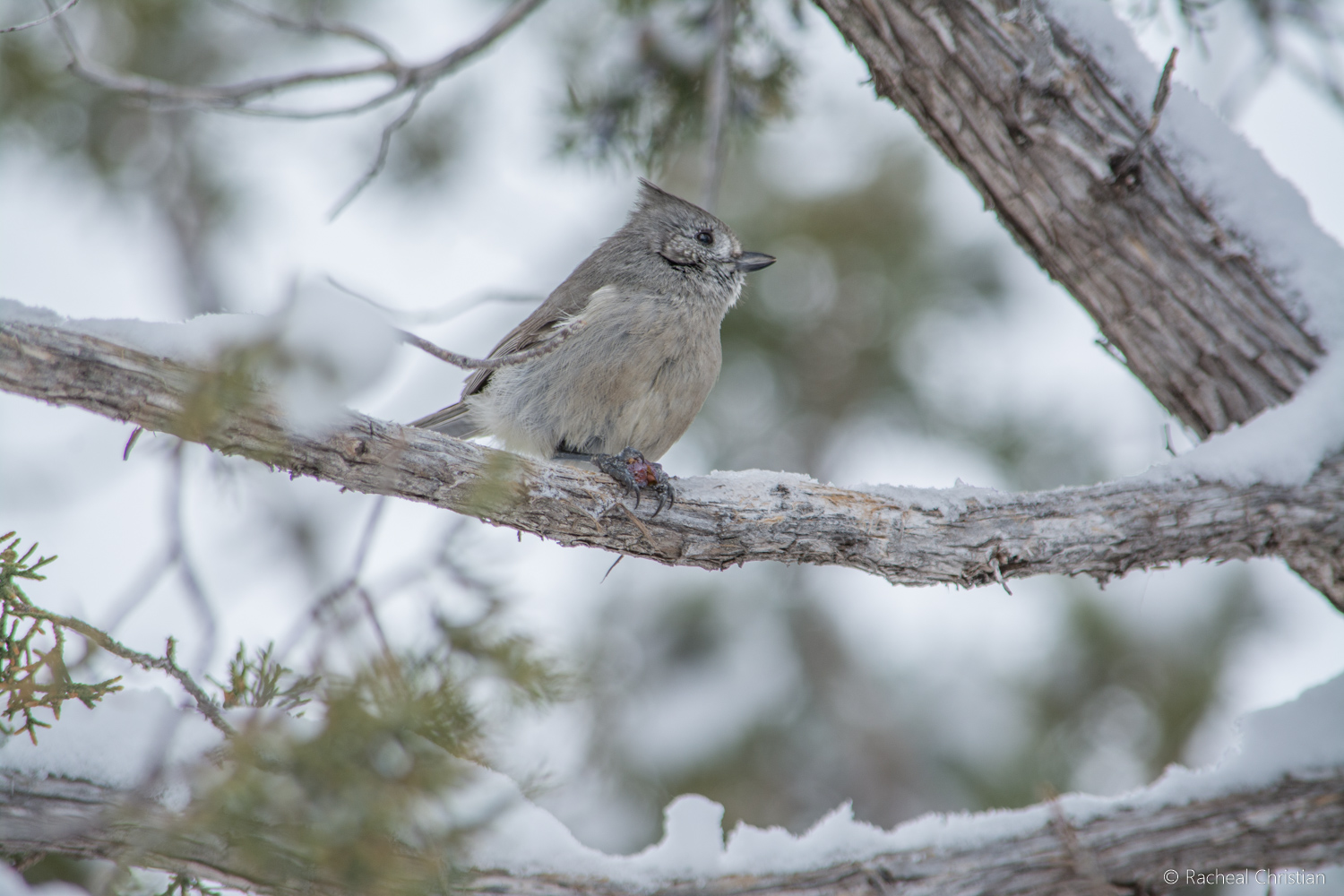
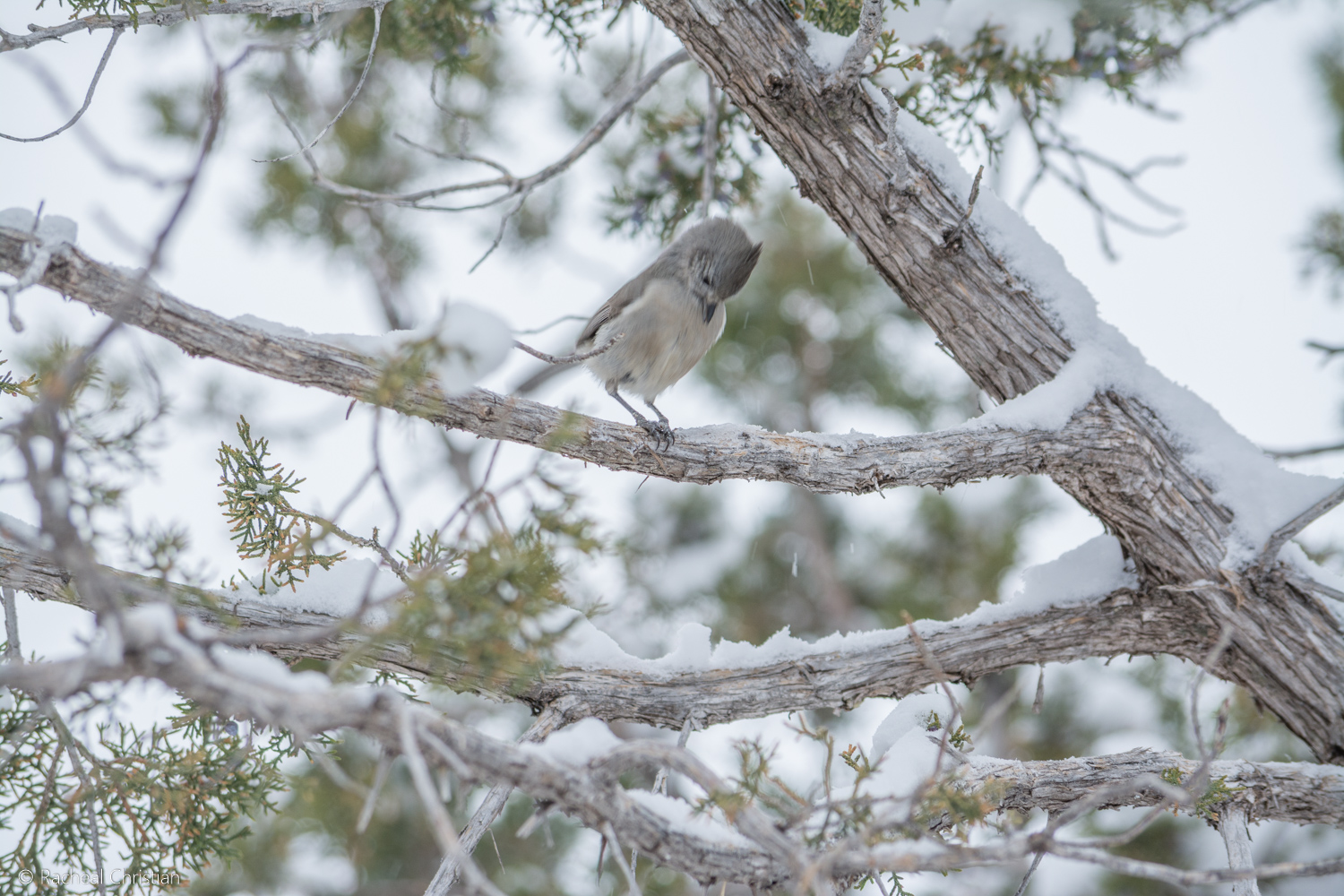
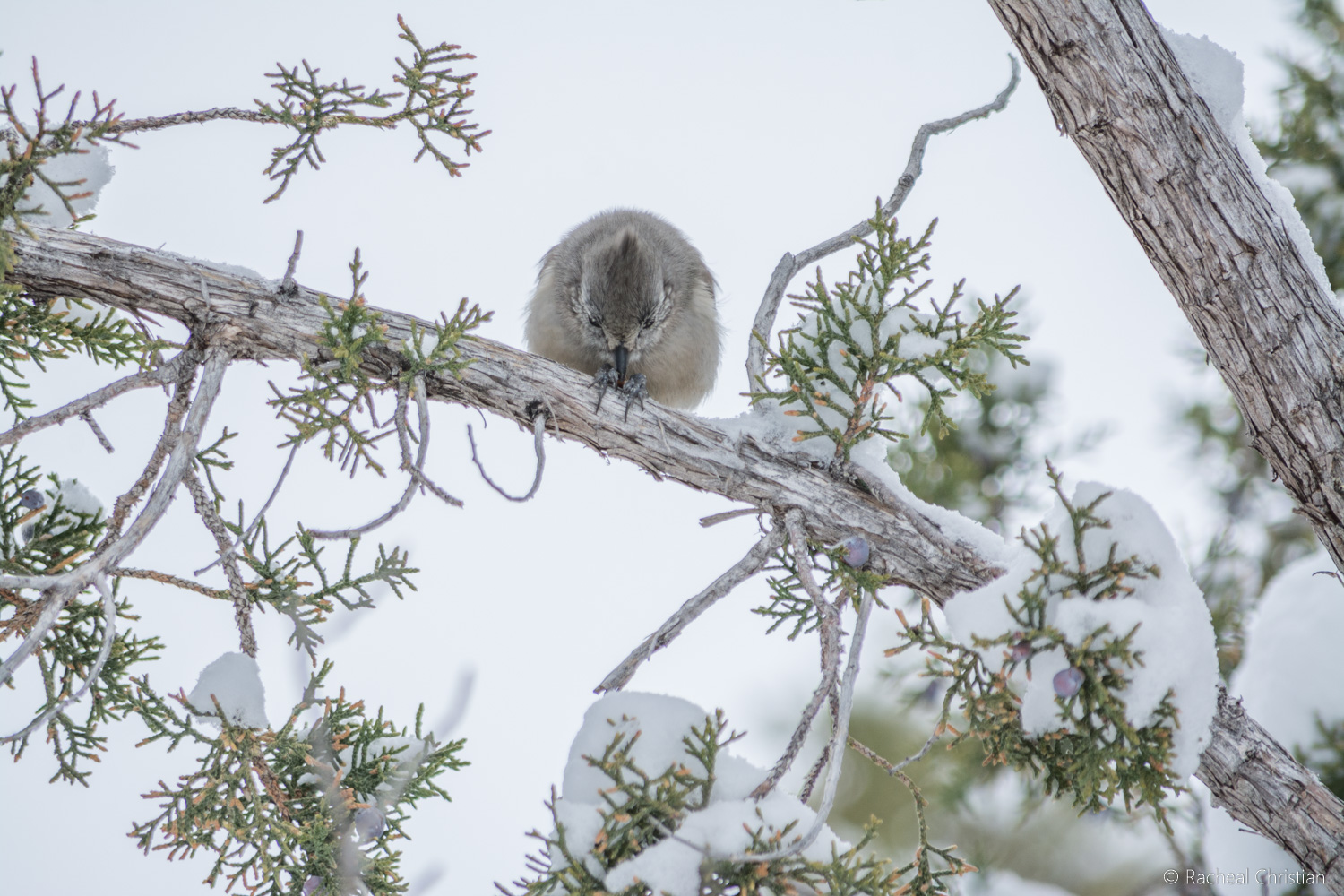
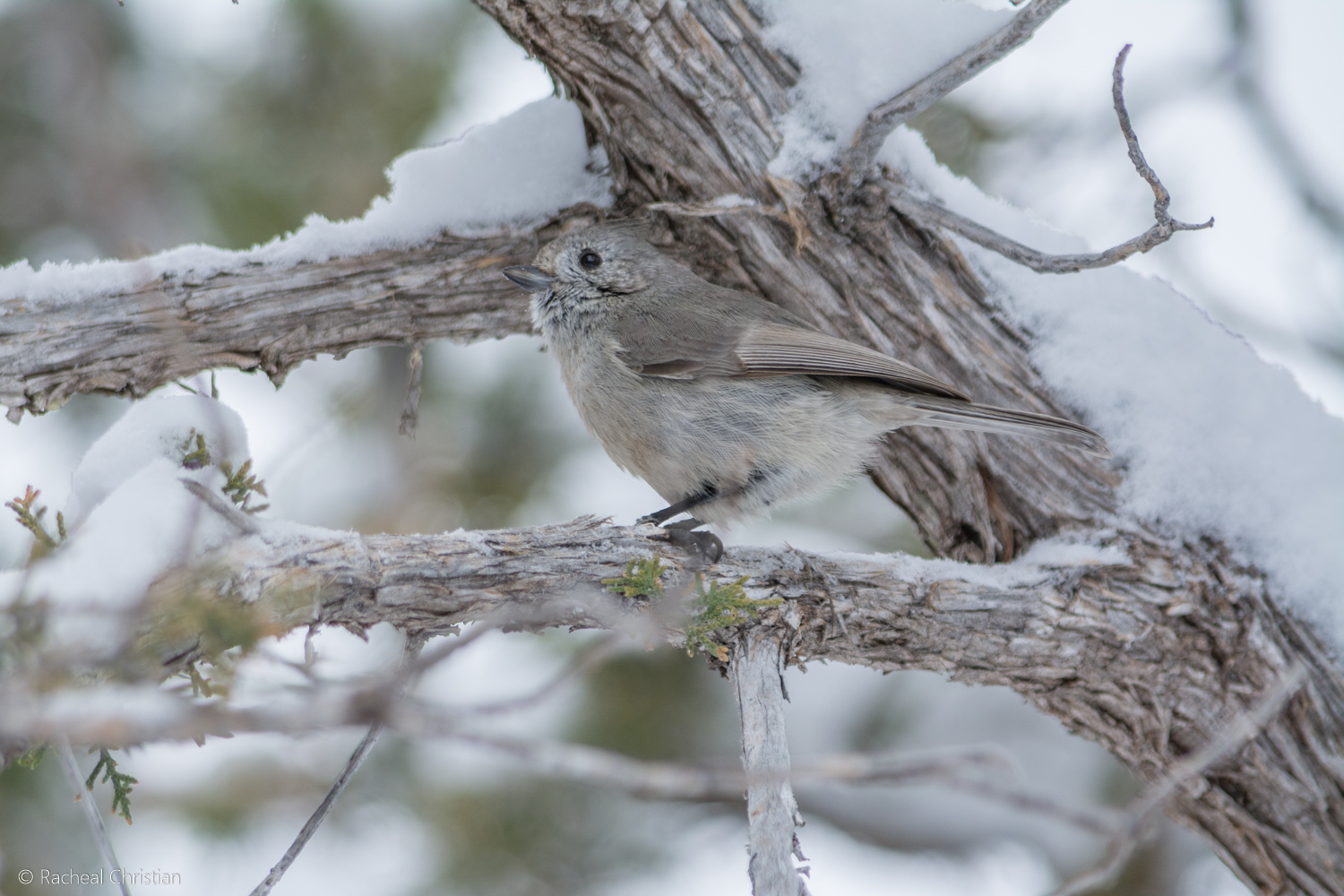
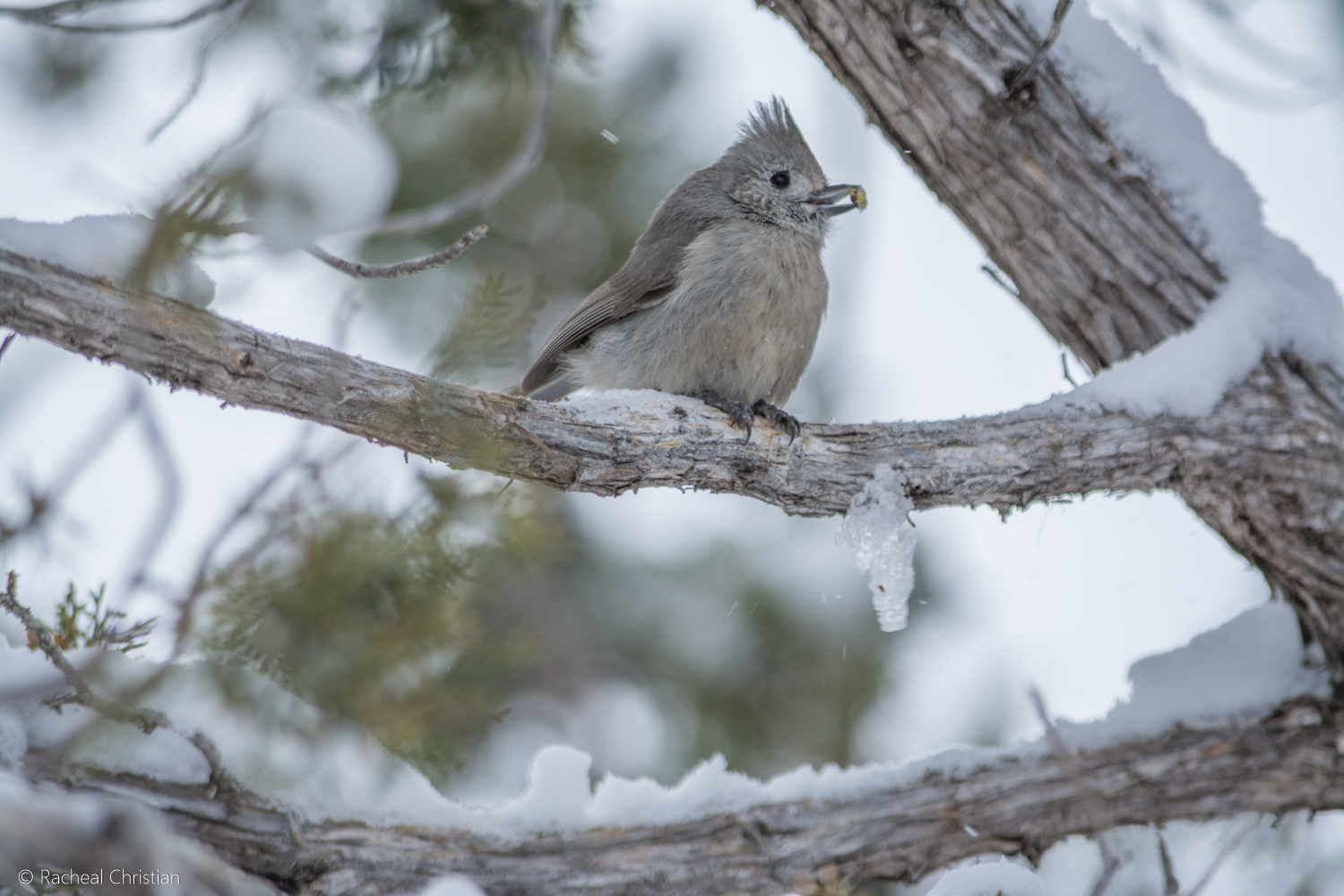
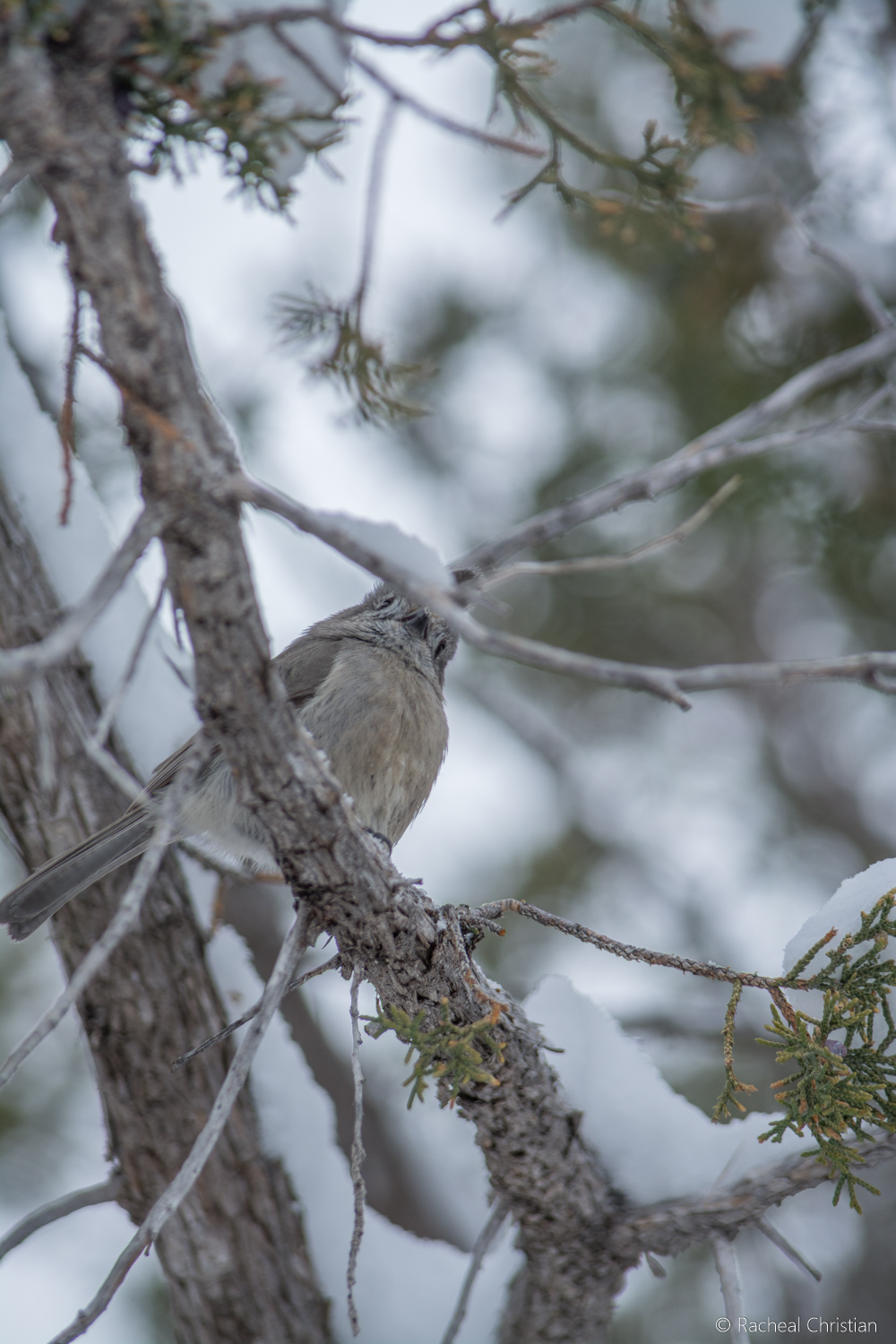

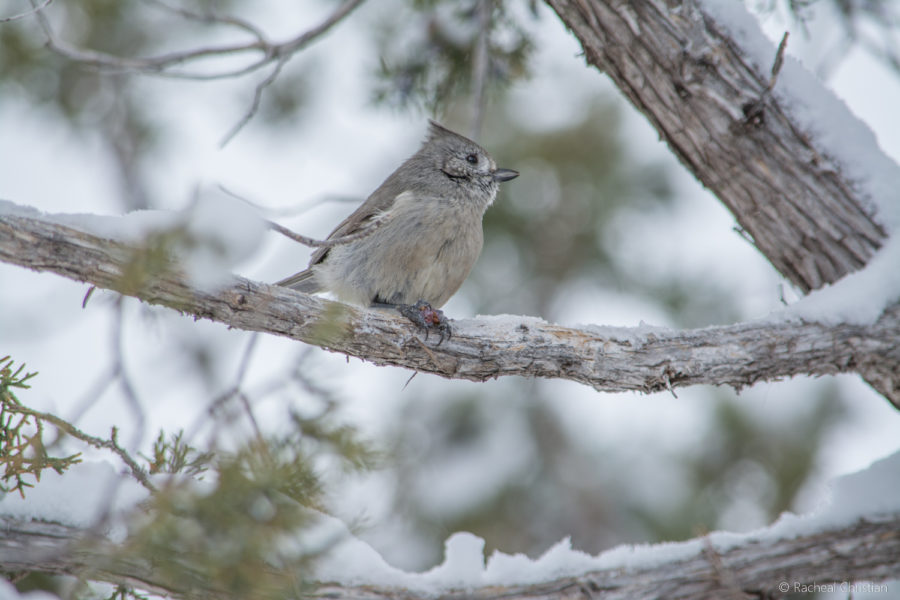










Leave a Reply
Your email is safe with us.